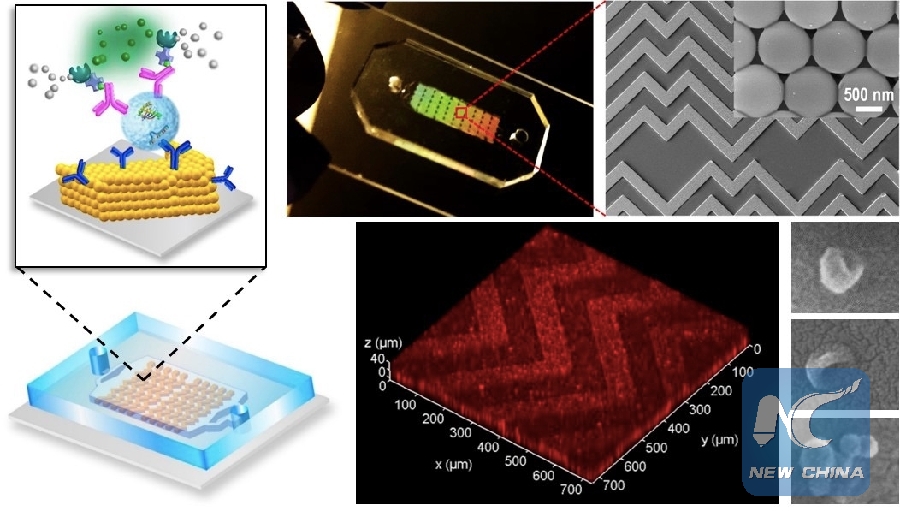
The new lab-on-a-chip's key innovation is a 3D nanoengineering method that mixes and senses biological elements based on a herringbone pattern commonly found in nature, pushing exosomes into contact with the chip's sensing surface much more efficiently in a process called "mass transfer." (Credit: KU News Service/ University of Kansas)
WASHINGTON, Feb. 25 (Xinhua) -- American researchers developed a smart needle that can safely deliver medicine to difficult-to-target regions in the body.
The study published on Monday in the journal Nature Biomedical Engineering showed that the intelligent injector could detect changes in resistance in body issues with different densities, enabling needle movement into a target tissue and with minimal overshoot into an undesired location.
In a preclinical test, investigators from Brigham and Women's Hospital in Boston examined its delivery accuracy in the suprachoroidal space, which is located between the sclera and choroid in the back of the eye.
The space is an important location for medication delivery and is difficult to target because the needle must stop after transitioning through the sclera, which is less than one millimeter thick, according to the study.
Using both extracted tissue and an animal model, the researchers found that the resistance-sensing device precisely delivered medication to the desired location without any additional training.
They also showed the injector could deliver stem cells to the back of the eye.
"The next step toward human use is to demonstrate the utility and safety of the technology in relevant pre-clinical disease models," said the paper's co-author Miguel Gonzalez-Andrades, an ophthalmologist at the Brigham.

